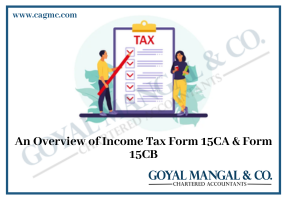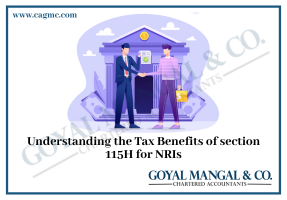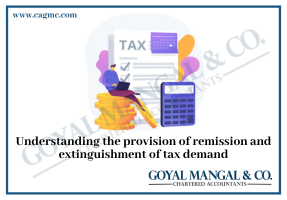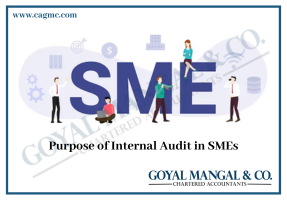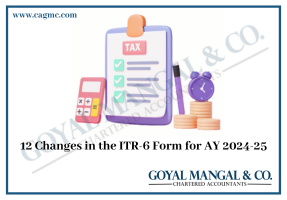
In our blog, we will unravel the basics of TDS deduction rules in India. Tax Deducted at Source, or TDS, is a process where a part of your earnings is deducted upfront as tax. It’s like a way of paying taxes as you earn. In this blog, we’ll break down this concept in simple terms, helping you understand how it works, when it applies, and why it’s crucial for both payers and receivers of several types of income. Let’s dive into the world of TDS with clarity and ease.
What is TDS?
TDS stands for “Tax Deducted at Source.” It is a mechanism mandated by the Income Tax Act of a country that requires a person making certain categories of payments to deduct a certain percentage of tax prior to making the payment to the recipient. The tax is then remitted to the government on the recipient’s behalf.
TDS applies to a variety of payment categories, including salaries, interest, rent, professional fees, and commission. The purpose of TDS is to assure consistent tax collection throughout the year and prevent tax evasion. By deducting tax at the time of payment, the government ensures that the beneficiary’s income is taxed at regular intervals, as opposed to relying on the recipient to pay the tax at the end of the fiscal year.
When and by whom should TDS be deducted?
Any person required to deduct TDS at the time of making a specified payment under the Income Tax Act. However, no TDS must be deducted if the payer is an individual or HUF whose accounts are not required to be audited.
For rent payments exceeding Rs 50,000 per month, individuals and HUFs are required to deduct TDS at the rate of 5%, even if they are not subject to a tax audit. Also, such Individuals and HUFs who are subject to a 5% TDS deduction are exempt from submitting a TAN application. Your employer deducts TDS at the applicable income tax bracket rates. Banks deduct 10% TDS. Alternatively, they may deduct 20% if they do not have your PAN.
For most payments, the income tax act specifies the TDS rates, and the payer deducts TDS based on these rates. If you submit investment proof (for claiming deductions) to your employer and your total taxable income is less than the taxable threshold, you are exempt from paying tax. Consequently, no TDS should be withheld from your income.
Similarly, if your total income is below the taxable limit, you can submit Forms 15G and 15H to the bank so that they do not deduct TDS from your interest income. If you were unable to provide substantiation to your employer, or if your employer or bank has already deducted TDS and your total income is below the taxable limit, you can file a return and request a refund of this TDS. The exhaustive list of Specified Payments subject to TDS deduction, along with the applicable TDS rate.
What is the date by which the TDS must be paid to the government?
The Tax Deducted at Source is due to the government by the seventh of the following month.
For example, TDS deducted in June must be paid to the government by July 7th. However, the TDS deducted in March can be deposited until April 30th. The payment deadline for TDS deducted on rent and property purchases is 30 days after the end of the month in which TDS was deducted.
How and when should TDS returns be filed?
Tax Deducted at Source (TDS) returns must be filed by anyone who has deducted TDS. Quarterly TDS returns must be filed with various details including TAN, amount of TDS deducted, form of payment, deductee’s PAN, etc. In addition, various forms are prescribed for filing returns based on the reason for TDS deduction. The following varieties of return forms are available: Form 26QTDS for all disbursements besides wages Q1 – July 31 Q2 – October 31 Q3 – January 31 Q4 – May 31st
| Form No. | Transaction reported in the return | Due Date | ||
| Form 24Q | TDS on Salary | Q1 – 31st July
Q2 – 31st Oct Q3 – 31ST Jan Q4 – 31st May |
||
| Form 27Q | TDS on all payment made to non -resident except salaries | Q1 – 31st July
Q2 – 31st Oct Q3 – 31st Jan Q4 – 31st May |
||
| Form 26QB | TDS on sale of property | 30 days from the end of the month in which TDS is deducted | ||
| Form 26QC | TDS on Rent | 30 days from the end of the month in which TDS is deducted |
What constitutes a TDS certificate?
Form 16, Form 16A, Form 16 B, and Form 16 C are all TDS certificates for tax withholding. A person deducting TDS is required to issue TDS certificates to the assessee from whose income TDS was deducted while making payment. For instance, when TDS is deducted from fixed deposit interest, banks issue Form 16A to the depositor. The employer provides Form 16 to the employee.
TDS rebates reported on Form 26AS
It is essential to comprehend the relationship between TDS and your PAN. TDS deductions are attached to both the deductor and the deductee’s PAN. If TDS was deducted from any of your income, you must complete Form 26AS, Tax Credit. This form is a consolidated income tax return accessible to all PAN holders.
Since all TDS is linked to your PAN, this form details the TDS deducted on your income by each deductor for all types of disbursements made to you, including salaries and interest income. This form also includes the income tax you paid directly, either as advance tax or self-assessment tax. In situations where TDS may be applicable to your income, it is crucial that you provide your PAN in the correct format.
How to upload TDS declarations
Follow the instructions below to upload TDS statements to the website of the Income Tax Department:
- Visit the Revenue Tax website. Sign in using your TAN.
- Choose e-File > Income Tax Forms > Federal Complete tax forms on the dashboard.
- Choose the appropriate form and complete the information
- Use either DSC or EVC to verify the return.
Types of TDS
Here are some of the income sources that qualify for TDS:
- Salary
- Payments to Contractor
- Commission payments
- Sale of House
- Insurance Commission
- Interest on securities
- Interest other than interest on securities
- Rent Payment
- Professional fees
- Online Gaming
- Winning from games like a lottery, crossword puzzle, card, etc
Tax Liability when TDS has already been deducted from Income
TDS is deducted from your compensation based on the income tax bracket that applies to you. For all other categories of income, the TDS rates are fixed and range between 10% and 20%. The tax rates are not proportional to one’s total income. In certain instances, you would incur a TDS on your invoices. You would be required to calculate your annual income separately by adding all sources of income
The total taxable income would be used to calculate your actual tax liability. From the calculated taxes, you can deduct the TDS deducted from your various receipts. Subtract the tax deducted at source from your actual tax liability to determine the balance owed to the department of income tax. You may also receive a refund. In either case, you must file a tax return and either pay the tax due or request a refund.
Rules for TDS Deduction
The Indian government has implemented Tax Deducted at Source (TDS) to collect taxes at the source of income generation. It requires the payer (deductor) to deduct a portion of the payment made to the payee (deductee) and remit it to the government on the payee’s behalf. Here are several important TDS regulations in India:
- Applicability: TDS applies to a variety of payment categories, including salaries, interest, rent, professional fees, commission, and royalties, among others. The Income Tax Act specifies the thresholds and tax rates for various payment types.
- Tax Deduction and Collection Account Number (TAN) Requirement: Entities required to deduct TDS must obtain a Tax Deduction and Collection Account Number (TAN) from the Income Tax Department. This TAN is used for TDS transaction reporting.
- TDS Rates: The TDS deduction rates differ depending on the nature of the payment. The government sets the tariffs, which are subject to change.
- Threshold Limits: When a payment exceeds a specified threshold limit, TDS is deducted. Different forms of payments have varying minimum thresholds.
- Quarterly Filing: Deductors are required to submit quarterly TDS returns (Form 24Q, 26Q, 27Q, etc.) detailing TDS deductions made throughout the quarter.
- TDS Certificates: After deducting tax withholding, the deductor issues a TDS certificate to the deductee. Form 16 is the standard TDS certificate for salary income, while Form 16A is used for all other payments.
- TDS Withholding and Payment Dates of Due: TDS must be deducted and remitted to the government by the dates specified. An overdue payment incurs interest and penalties.
- PAN Requirement: The deductor must acquire the Permanent Account Number (PAN) of the deductee and include it on TDS certificates and returns.
- Exemptions and Reduced Deductions: In certain instances, the deductee may submit Form 15G or Form 15H to request a reduced or non-existent TDS deduction if their income is below the taxable limit.
- Foreign Payments: The TDS rules apply to payments made to non-residents as well. Different terms and rates apply to these payments.
- TDS Challan: The TDS Challan is used by the deductor to deposit the TDS amount with authorized banks.
- Non-Resident TDS Certificates: Form 27Q is issued to non-resident deductees for various categories of income.
It is essential for both deductor and deductee to grasp and comply with TDS rules. Noncompliance may result in fines and legal repercussions. Individuals and entities seeking specific and current information should consult the Income Tax Act and tax professionals.
Conclusion
In conclusion, grasping the fundamentals of TDS deduction rules empowers individuals and businesses to navigate the tax landscape effectively. By following these rules, taxpayers ensure that their financial transactions are compliant with tax regulations, contributing to the country’s revenue collection. Whether you’re a salaried employee or involved in different financial transactions, understanding TDS ensures a smoother financial journey while adhering to legal obligations.


